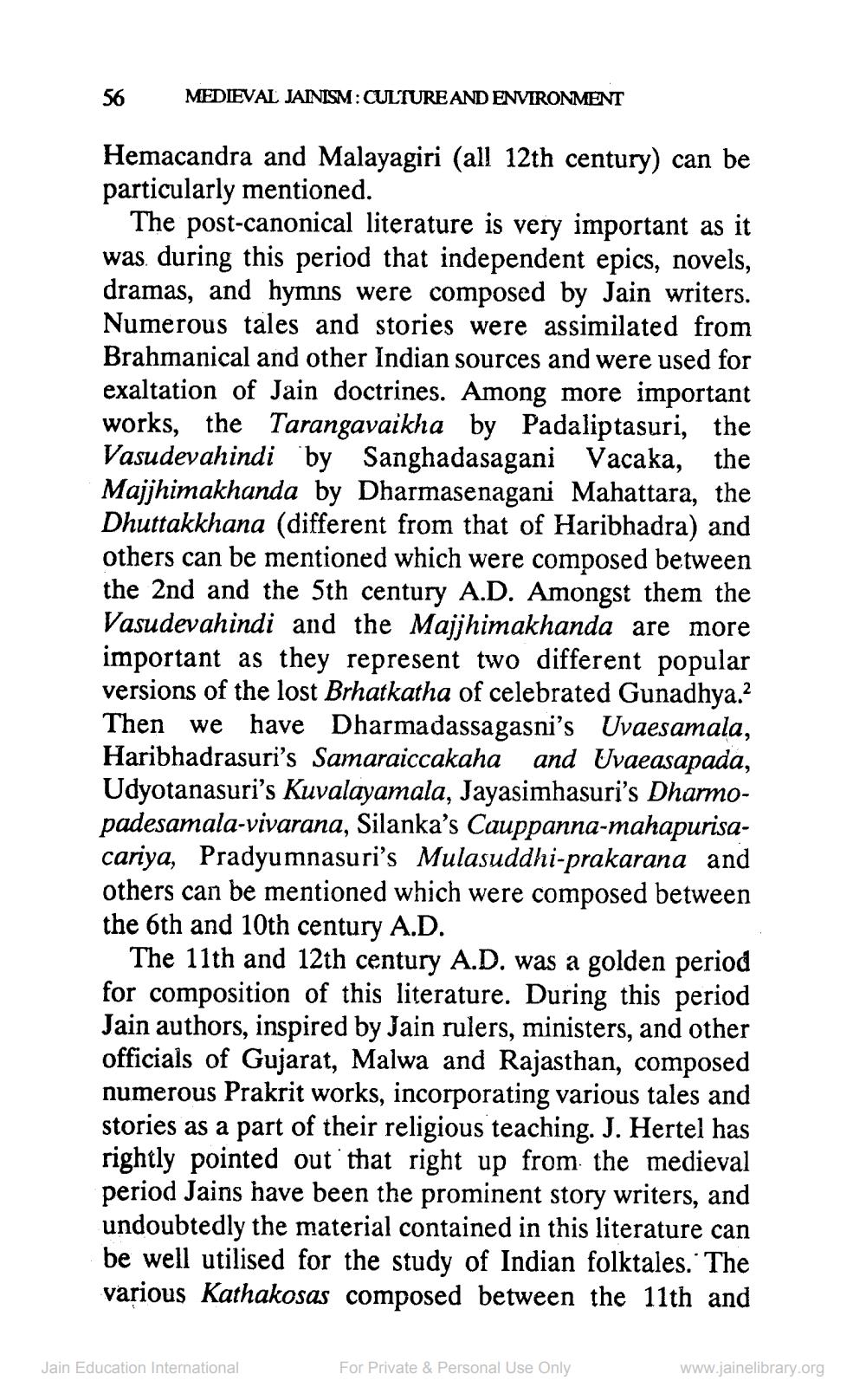________________
56
MEDIEVAL JAINISM : CULTURE AND ENVIRONMENT
Hemacandra and Malayagiri (all 12th century) can be particularly mentioned.
The post-canonical literature is very important as it was during this period that independent epics, novels, dramas, and hymns were composed by Jain writers. Numerous tales and stories were assimilated from Brahmanical and other Indian sources and were used for exaltation of Jain doctrines. Among more important works, the Tarangavaikha by Padaliptasuri, the Vasudevahindi by Sanghadasagani Vacaka, the Majjhimakhanda by Dharmasenagani Mahattara, the Dhuttakkhana (different from that of Haribhadra) and others can be mentioned which were composed between the 2nd and the 5th century A.D. Amongst them the Vasudevahindi and the Majjhimakhanda are more important as they represent two different popular versions of the lost Brhatkatha of celebrated Gunadhya.? Then we have Dharmadassagasni's Uvaesamala, Haribhadrasuri's Samaraiccakaha and Uvaeasapada, Udyotanasuri's Kuvalayamala, Jayasimhasuri's Dharmopadesamala-vivarana, Silanka's Cauppanna-mahapurisacariya, Pradyumnasuri's Mulasuddhi-prakarana and others can be mentioned which were composed between the 6th and 10th century A.D.
The 11th and 12th century A.D. was a golden period for composition of this literature. During this period Jain authors, inspired by Jain rulers, ministers, and other officials of Gujarat, Malwa and Rajasthan, composed numerous Prakrit works, incorporating various tales and stories as a part of their religious teaching. J. Hertel has rightly pointed out that right up from the medieval period Jains have been the prominent story writers, and undoubtedly the material contained in this literature can be well utilised for the study of Indian folktales. The various Kathakosas composed between the 11th and
Jain Education International
For Private & Personal Use Only
www.jainelibrary.org




